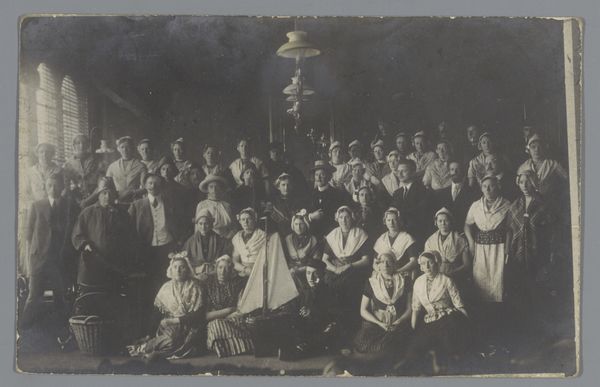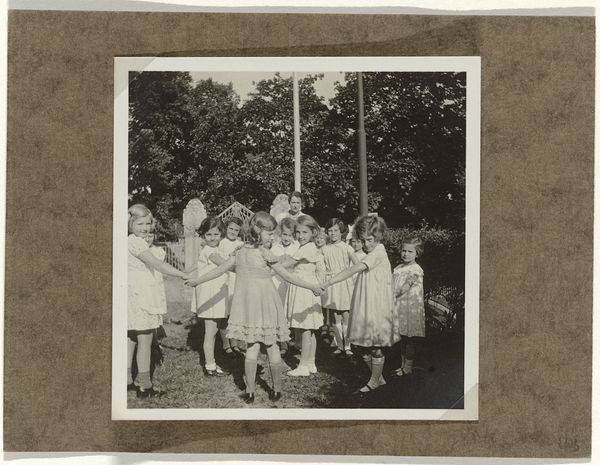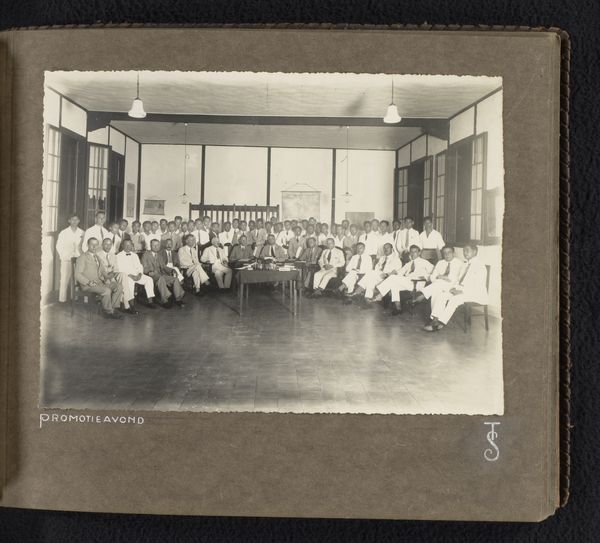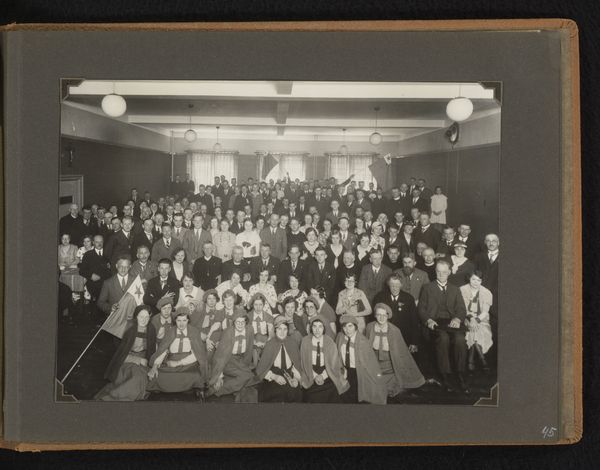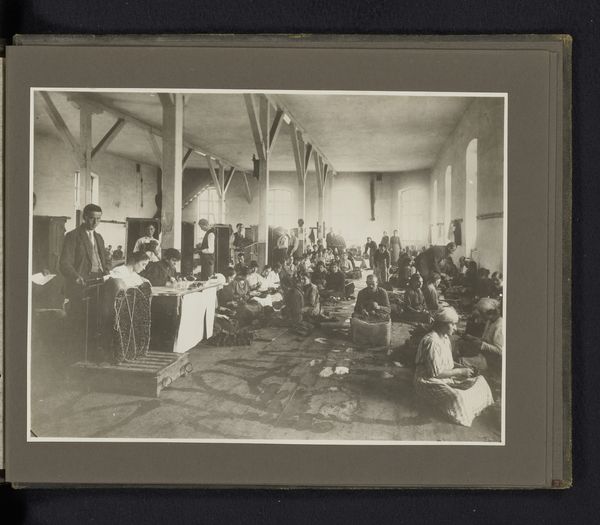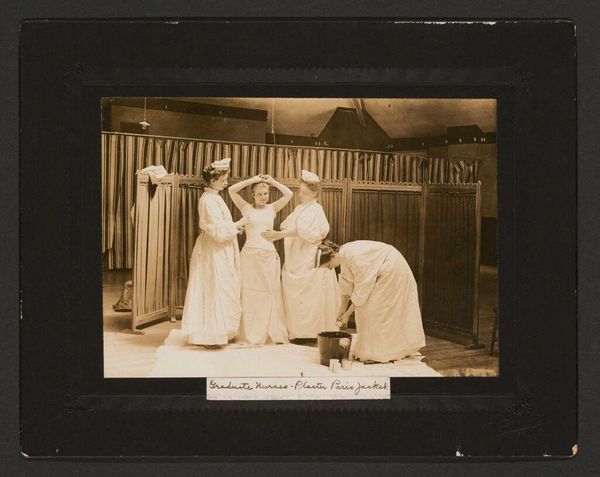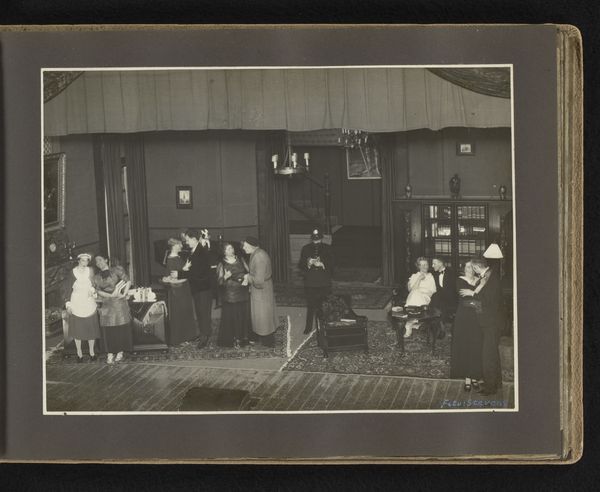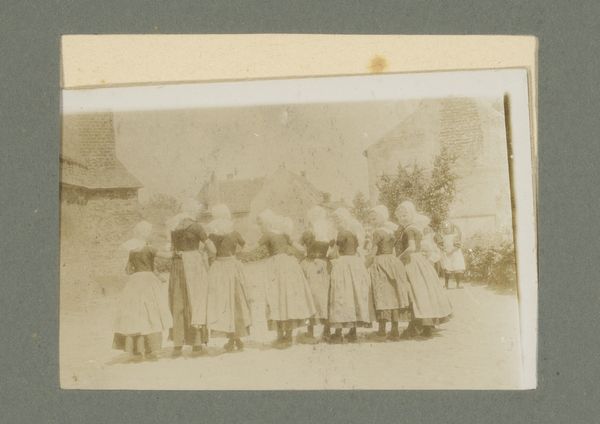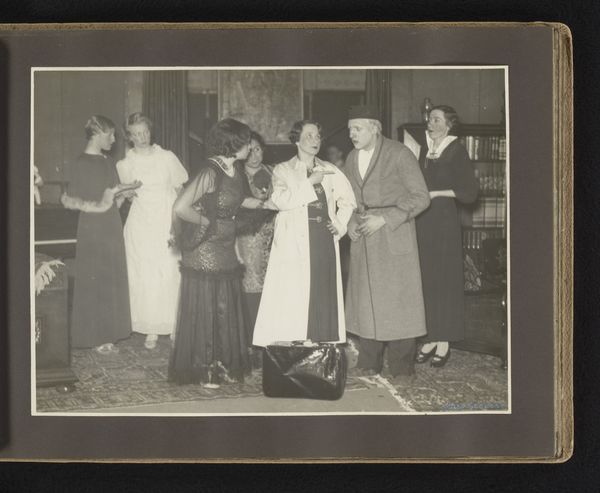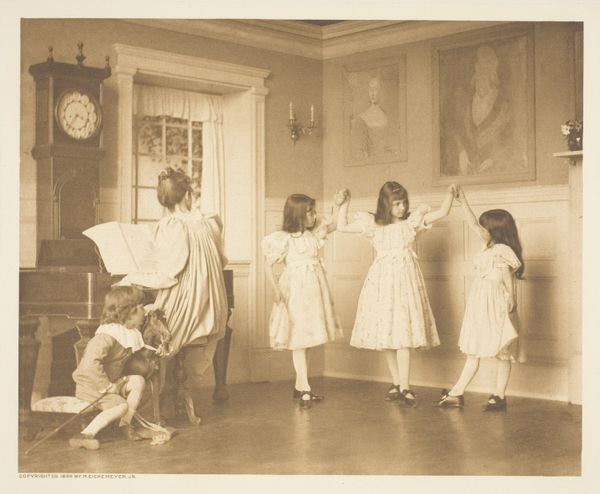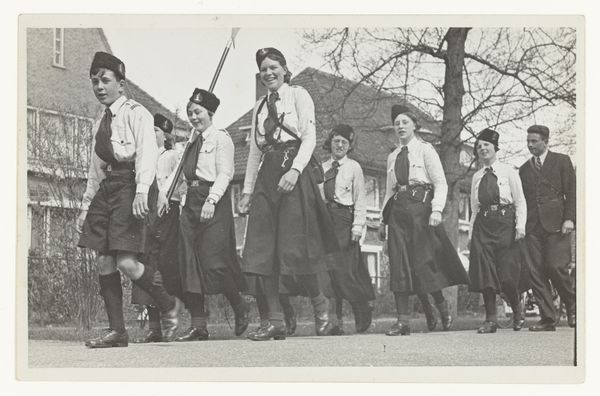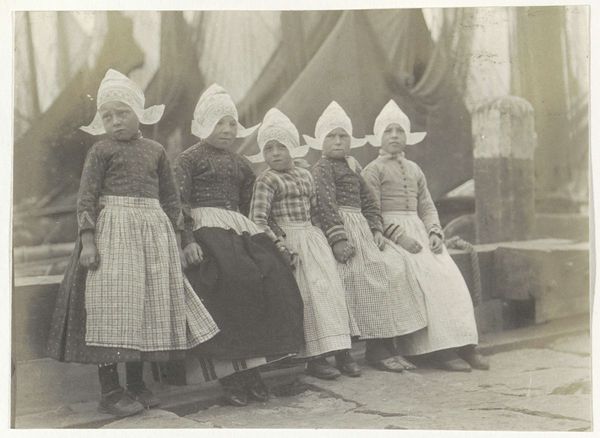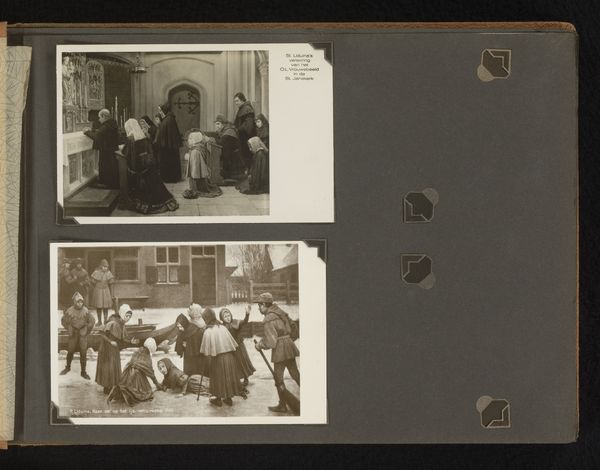
print, photography
#
portrait
#
print photography
# print
#
photography
#
group-portraits
#
islamic-art
#
genre-painting
Dimensions: height 210 mm, width 270 mm
Copyright: Rijks Museum: Open Domain
Editor: This photograph, "Derwisjen tijdens een sama", taken between 1888 and 1900 by Sébah & Joaillier, captures a group of whirling dervishes in what appears to be a religious ceremony. The photograph feels incredibly staged and self-aware. What strikes you most about this image? Curator: The staged aspect is precisely what captures my attention. It's not just a documentary photograph, but a deliberate construction of an image for a Western audience, perhaps eager to consume the "exotic." How does the very act of photographing and displaying this image reinforce certain power dynamics and orientalist perspectives? Editor: That's fascinating, I hadn't thought of it that way. Could you elaborate on the power dynamics at play here? Curator: Think about who is controlling the narrative. Sébah & Joaillier were a successful photography studio catering largely to European tourists. They chose what aspects of Ottoman life to frame and how to present them. The dervishes, participating in a religious ritual, become objects of visual consumption. The photograph itself becomes a commodity, reinforcing the Western gaze and solidifying power structures between colonizer and colonized. Editor: So, it's not necessarily about what the image depicts, but how it’s framed and who the intended audience is. I notice that there’s a carpet framing the scene and I am starting to wonder about the context that would permit that? Curator: Precisely! Consider the public role of art and images during this period. Photography played a critical role in shaping public perception, informing colonial attitudes. Did this photograph challenge existing stereotypes or further entrench them? And who ultimately benefited from the distribution of such imagery? Editor: I now see a new layer to the photograph, something beyond just the spiritual practice. It brings so many things into focus, not just their practice but the view others had of them. Curator: Indeed. And by acknowledging these contextual layers, we can better understand not just the art, but the complex web of cultural and political forces that shaped its creation and reception.
Comments
No comments
Be the first to comment and join the conversation on the ultimate creative platform.
